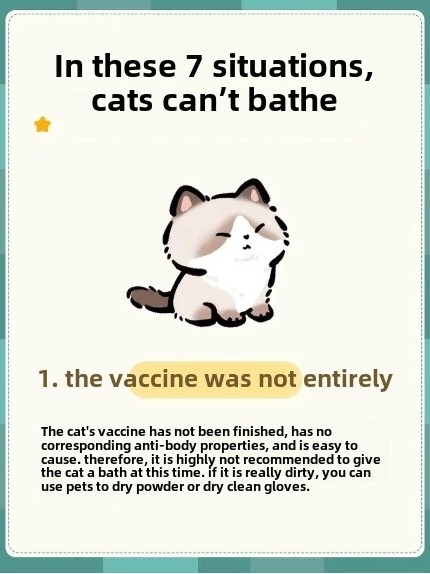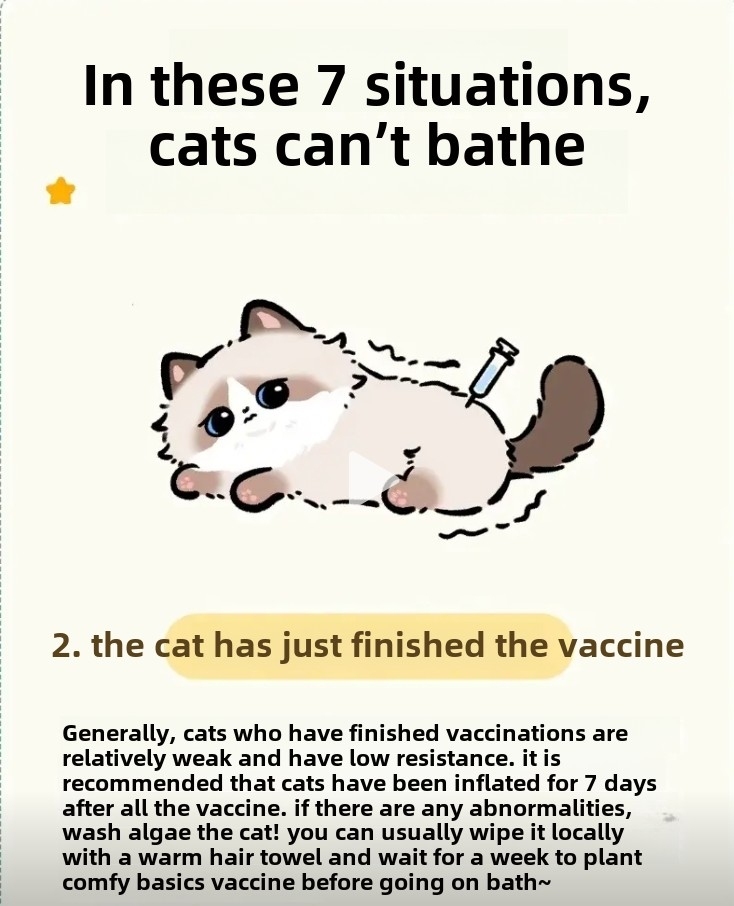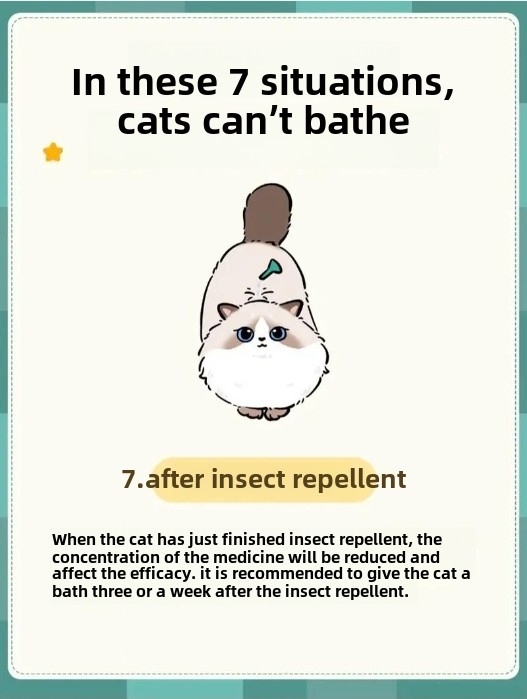Cats are famously clean creatures, spending hours grooming themselves daily. However, there are critical moments when bathing them can do more harm than good. Ignoring these situations risks triggering severe stress, compromising their immune system, or even leading to life-threatening complications. As a responsible cat owner, understanding when not to bathe your cat is as crucial as knowing how to do it safely. This guide breaks down the 7 most common scenarios where a bath could spell disaster—backed by veterinary insights and real-world risks. Let’s dive into the non-negotiable rules every cat parent must follow.
1. Unvaccinated Kittens or Cats With Incomplete Vaccinations

Bathing a kitten or cat that hasn’t completed its vaccination schedule is a gamble with their health. Unvaccinated cats lack immunity to deadly viruses like feline panleukopenia (FPV) or calicivirus. Exposure to water, temperature changes, or stress from bathing can weaken their already fragile immune systems, making them susceptible to infections.
Key Risks:
Increased vulnerability to airborne pathogens during and after bathing.
Stress-induced suppression of immune responses.
Solution: Use pet-safe dry shampoo or grooming wipes for spot cleaning until vaccines are fully administered (typically 12–16 weeks old).
2. Cats Within 2 Weeks of Vaccination

Vaccines work by stimulating the immune system, which temporarily lowers your cat’s ability to fight off other illnesses. Bathing during this window can lead to hypothermia, stress-related immunosuppression, or even vaccine failure.
Critical Timeline:
Wait at least 7–10 days post-vaccination before bathing.
Monitor for lethargy, fever, or swelling at the injection site, which signal delayed reactions.
3. Newly Adopted Cats or Post-Relocation

A new environment triggers massive stress for cats. Bathing them within the first 1–2 weeks of adoption (or after moving homes) exacerbates anxiety, often leading to refusal to eat, diarrhea, or hiding behaviors.
Why It’s Risky:
Stress hormones like cortisol suppress immune function.
Sudden baths can create lifelong fear of water.
Pro Tip: Let your cat explore and scent-mark the new space first. Use pheromone sprays to ease transition anxiety.
4. After Meals or Intense Play Sessions

Bathing a cat immediately after eating or vigorous exercise strains their cardiovascular system. Blood flow shifts away from the stomach and heart during bathing, raising risks of indigestion, vomiting, or even fainting.
Safe Window:
Wait 2 hours after meals.
Allow 30–60 minutes of calm after play before bath time.
5. Sick, Injured, or Post-Surgery Cats

A cat’s body redirects energy to healing when sick or recovering from injuries. Bathing disrupts this process, increasing the likelihood of hypothermia, wound infections, or delayed recovery.
Exceptions:
Medicated baths prescribed by vets for skin conditions.
Always use lukewarm water and avoid affected areas.
6. Postpartum Cats (Up to 8 Weeks After Birth)

New mother cats are physically exhausted and hormonally volatile. Bathing too soon after delivery risks mastitis, uterine infections, or rejection of kittens due to altered scent.
When to Resume Bathing:
Wait at least 4–6 weeks post-birth.
Use damp cloths for gentle cleaning if necessary.
7. Within 72 Hours of Flea/Tick Treatment

Topical flea treatments need time to spread through the skin’s oils. Bathing too soon washes away the product, rendering it ineffective.
Optimal Timing:
Apply treatments on dry skin.
Wait 3 days before bathing to ensure full efficacy.
By respecting these boundaries, you protect your cat’s physical and emotional well-being. When in doubt, consult your vet—better safe than sorry! 🐾








No comments yet, come on and post~